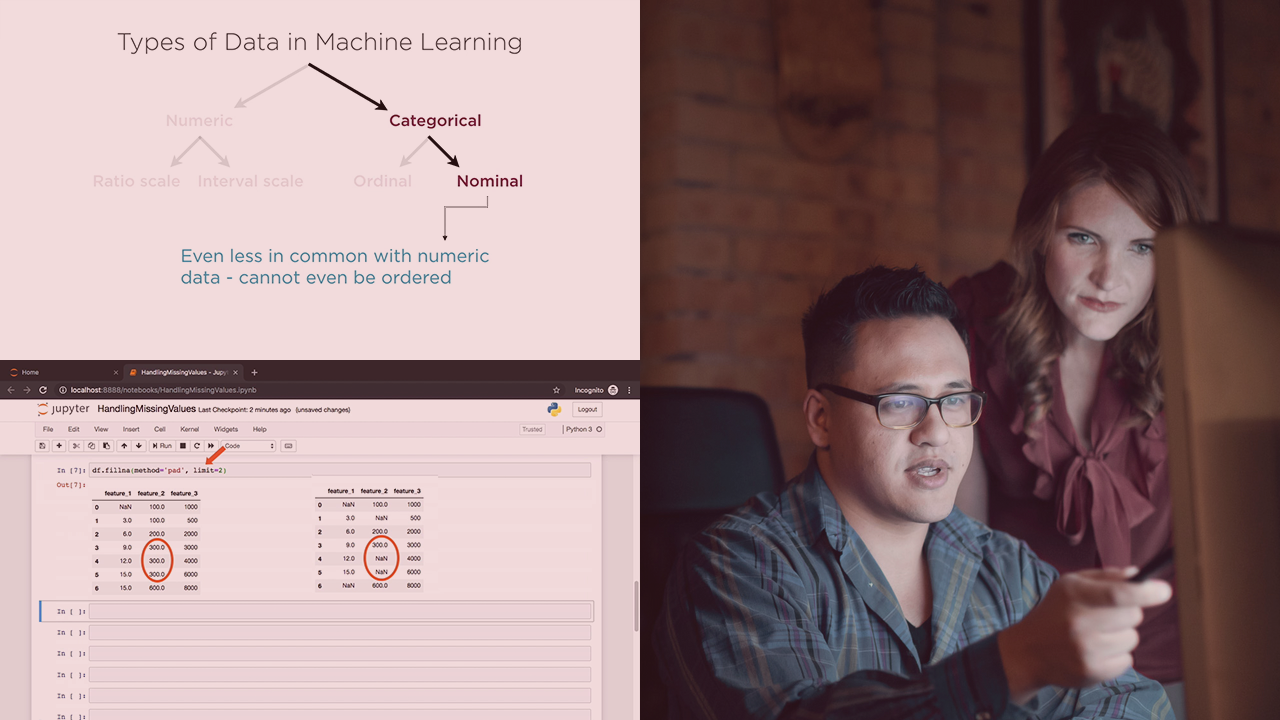- Course
Preparing Data for Feature Engineering and Machine Learning
This course covers categories of feature engineering techniques used to get the best results from a machine learning model, including feature selection, and several feature extraction techniques to re-express features in the most appropriate form.

- Course
Preparing Data for Feature Engineering and Machine Learning
This course covers categories of feature engineering techniques used to get the best results from a machine learning model, including feature selection, and several feature extraction techniques to re-express features in the most appropriate form.
Get started today
Access this course and other top-rated tech content with one of our business plans.
Try this course for free
Access this course and other top-rated tech content with one of our individual plans.
This course is included in the libraries shown below:
- AI
- Data
What you'll learn
However well designed and well implemented a machine learning model is, if the data fed in is poorly engineered, the model’s predictions will be disappointing.
In this course, Preparing Data for Feature Engineering and Machine Learning, you will gain the ability to appropriately pre-process your data -- in effect engineer it -- so that you can get the best out of your ML models.
First, you will learn how feature selection techniques can be used to find predictors that contain the most information. Feature selection can be broadly grouped into three categories known as filter, wrapper, and embedded techniques and we will understand and implement all of these.
Next, you will discover how feature extraction differs from feature selection, in that data is substantially re-expressed, sometimes in forms that are hard to interpret. You will then understand techniques for feature extraction from image and text data.
Finally, you will round out your knowledge by understanding how to leverage powerful Python libraries for working with images, text, dates, and geo-spatial data.
When you’re finished with this course, you will have the skills and knowledge to identify the correct feature engineering techniques, and the appropriate solutions for your use-case.
Preparing Data for Feature Engineering and Machine Learning
-
Version Check | 16s
-
Module Overview | 1m 10s
-
Prerequisites and Course Outline | 1m 13s
-
Features and Labels | 6m 21s
-
The Machine Learning Workflow | 3m 59s
-
Components of Feature Engineering | 2m 36s
-
Feature Selection, Feature Learning, and Feature Extraction | 6m 51s
-
Feature Combination and Dimensionality Reduction | 3m 51s
-
Training, Validation, and Test Data | 5m 35s
-
K-fold Cross Validation | 4m 13s
-
Module Summary | 1m 18s

